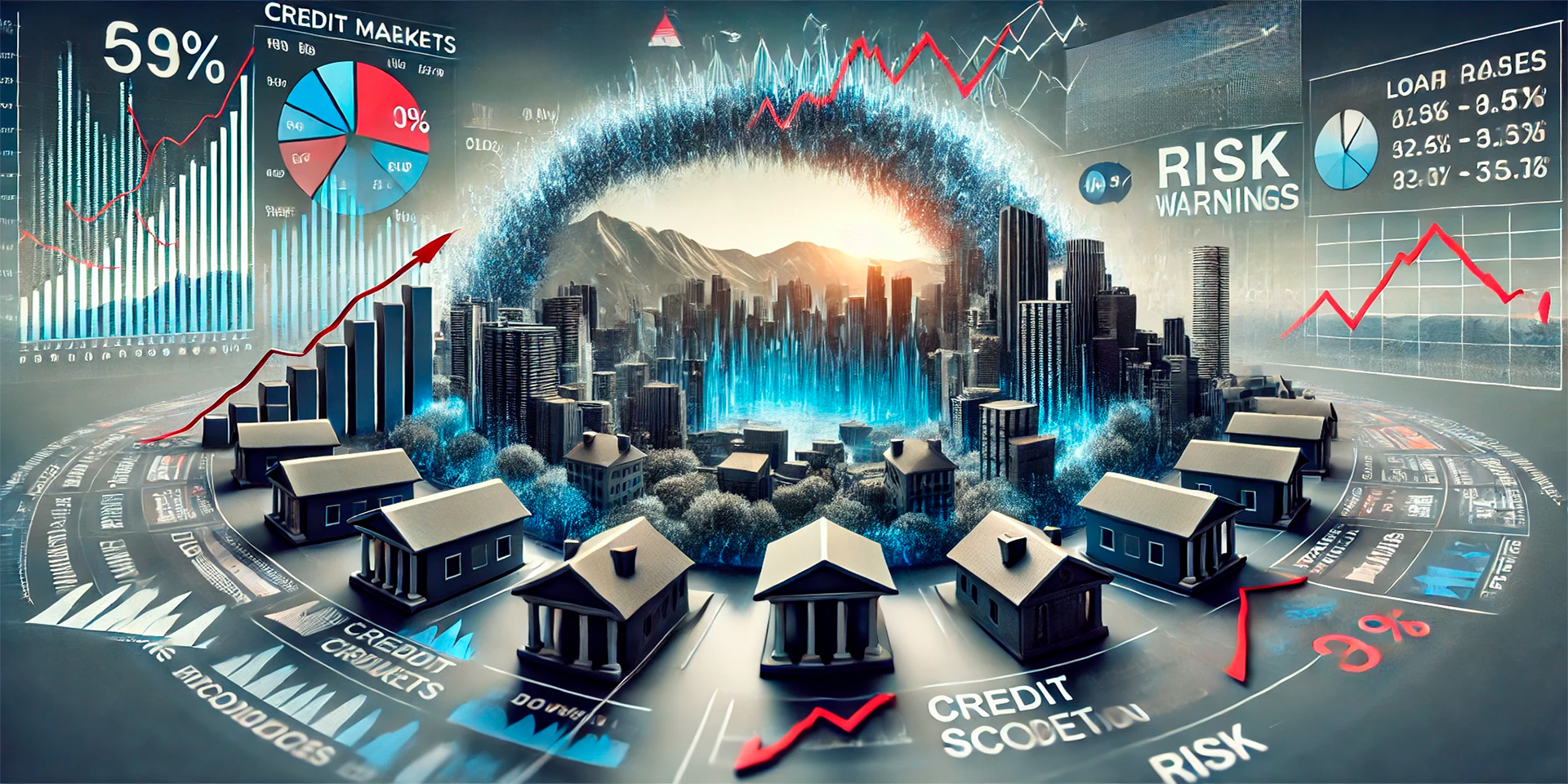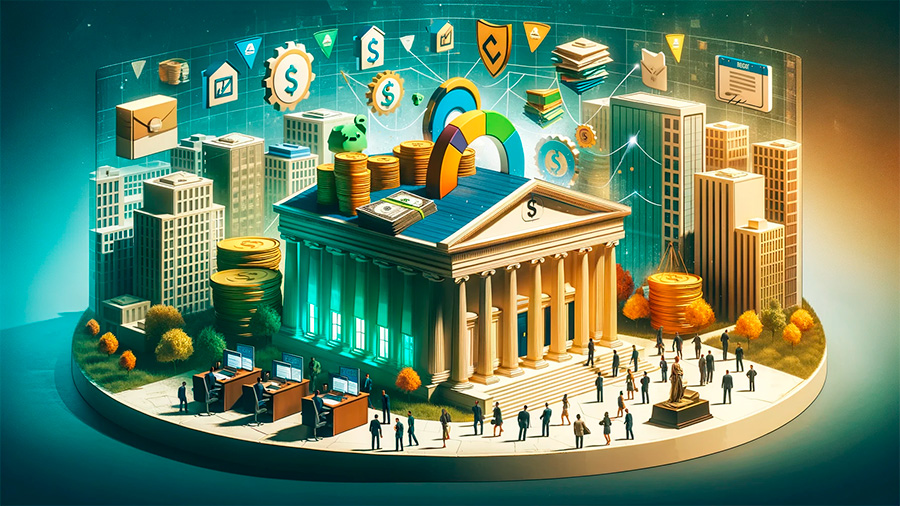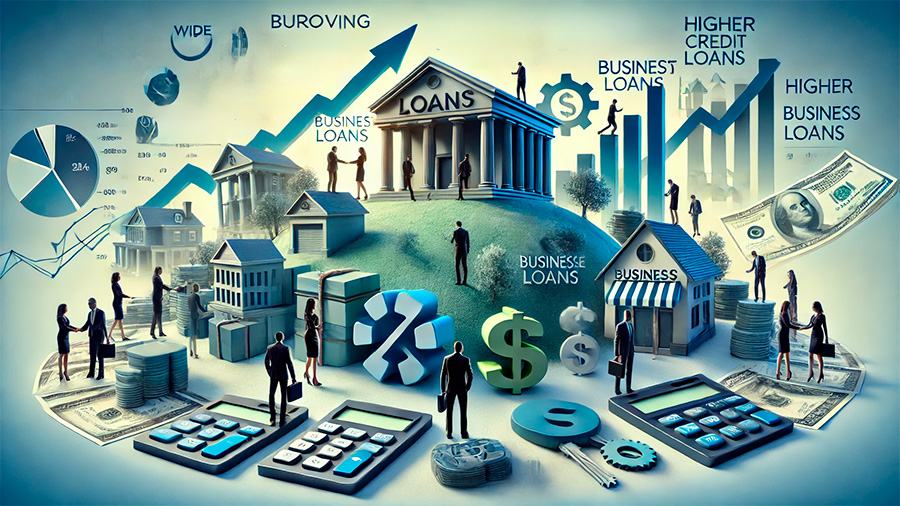
Stricter Lending Policies During Economic Crises: What Borrowers Should Know
Economic crises have a profound and lasting impact on lending policies and borrower eligibility. The financial strain caused by crises, such as the 2008 financial collapse or the more recent pandemic-driven economic downturns, forces both lenders and policymakers to reconsider their approach to credit markets. As lenders grapple with increased risk, stricter regulations, and shifting economic priorities, borrowers face new hurdles in accessing loans. The long-term effects of economic crises can reshape the lending landscape, influencing everything from interest rates to credit requirements for years to come.
This article explores how economic crises affect lending practices in America, the challenges facing both lenders and borrowers, and the potential future of credit access in the wake of financial uncertainty.
How Economic Crises Affect Lending Policies
During economic crises, the financial stability of borrowers becomes more uncertain, leading to heightened risk for lenders. As a result, banks and financial institutions often tighten their lending policies, raising the standards for creditworthiness and reducing the availability of loans. This shift is driven by the need to mitigate risk, maintain liquidity, and comply with government regulations that are often implemented in response to economic downturns.
1. Stricter Credit Requirements
One of the most immediate effects of an economic crisis is the tightening of credit requirements. Lenders become more cautious about extending loans to individuals and businesses, especially those deemed high-risk. Borrowers who might have qualified for loans before the crisis may find themselves unable to meet the stricter criteria imposed by banks and financial institutions. Higher credit score requirements, larger down payments, and lower debt-to-income ratios become common during and after economic crises.
Key changes in credit requirements:
- Higher credit score thresholds: Lenders raise the minimum credit score needed for loan approval to reduce the likelihood of defaults.
- Larger down payments: Borrowers may be required to make larger down payments to secure loans, reducing the risk for lenders in case of default.
2. Reduced Access to Credit for Small Businesses
Small businesses often face the most significant challenges in accessing credit during economic crises. As lenders become more risk-averse, they are less likely to extend loans to small or newly established businesses that may lack the financial resilience to weather economic uncertainty. Small business owners may struggle to secure the financing they need to maintain operations, invest in growth, or recover from the effects of the crisis. This reduced access to credit can stifle innovation and slow economic recovery, as small businesses are vital drivers of job creation and economic activity.
Challenges for small businesses:
- Increased rejection rates: Small businesses face higher rejection rates for loan applications due to lenders’ cautious approach to risk.
- Limited working capital: Reduced access to credit makes it difficult for small businesses to cover operating costs or invest in expansion during and after a crisis.

The Role of Government Regulations in Lending During Crises
Government intervention plays a critical role in shaping the future of lending during economic crises. In response to financial instability, governments often introduce new regulations aimed at protecting both borrowers and lenders. These regulations may include stricter oversight of financial institutions, enhanced consumer protections, and government-backed lending programs designed to stimulate the economy and provide relief to struggling borrowers.
1. Enhanced Consumer Protections
In the wake of economic crises, governments frequently introduce new consumer protection laws to prevent predatory lending practices and ensure that borrowers are treated fairly. These protections may limit the fees that lenders can charge, cap interest rates on certain types of loans, or mandate more transparent lending practices. While these regulations are intended to protect consumers from exploitative practices, they can also make it more challenging for some borrowers to access credit, particularly those with lower credit scores or limited financial histories.
Examples of consumer protection measures:
- Caps on interest rates: Regulations may limit the maximum interest rates that lenders can charge, providing relief to borrowers but potentially reducing the availability of credit.
- Stricter disclosure requirements: Lenders may be required to provide more detailed information about loan terms, fees, and risks, promoting transparency and informed decision-making for borrowers.
2. Government-Backed Lending Programs
To stimulate lending and support economic recovery, governments often implement lending programs designed to provide financial relief to businesses and individuals during crises. These programs, such as the Paycheck Protection Program (PPP) introduced during the COVID-19 pandemic, offer low-interest loans, loan forgiveness options, or government guarantees to incentivize lending. By reducing the risk to lenders, these programs help maintain access to credit for businesses and consumers who might otherwise struggle to secure financing.
Impact of government-backed lending programs:
- Increased credit availability: Government guarantees reduce the risk for lenders, making it easier for borrowers to access loans even during periods of economic uncertainty.
- Support for struggling industries: Targeted lending programs provide much-needed capital to industries hit hardest by the crisis, such as hospitality, retail, and transportation.

Borrower Eligibility in a Post-Crisis Economy
As the economy recovers from a crisis, borrower eligibility criteria may continue to evolve. Lenders remain cautious even after the immediate crisis has passed, and many of the stricter lending policies implemented during the downturn may persist for years. This cautious approach impacts a broad range of borrowers, from individuals seeking mortgages or personal loans to businesses looking to finance expansion or recovery efforts.
1. Long-Term Impact on Mortgage Lending
The mortgage market is particularly sensitive to changes in lending policies during and after economic crises. After the 2008 financial crisis, for example, lenders imposed stricter requirements for home loans, making it harder for borrowers with lower credit scores or smaller down payments to secure mortgages. This trend continued for several years as the housing market slowly recovered. Similarly, in the wake of future economic crises, we can expect tighter lending standards for homebuyers, including higher credit score requirements and larger down payments.
Changes in mortgage lending after crises:
- Higher down payments: Lenders may require homebuyers to make larger down payments to reduce the risk of default, particularly for first-time buyers or those with lower credit scores.
- Stricter income verification: Borrowers may face more stringent income verification processes to ensure they can afford mortgage payments in a post-crisis economy.
2. The Future of Business Loans
For businesses, the long-term effects of economic crises on lending practices may include continued difficulty in securing financing, particularly for small and medium-sized enterprises (SMEs). Lenders may remain cautious about extending credit to businesses without a proven track record of financial stability, especially in industries vulnerable to economic downturns. However, government-backed lending programs and new financial technologies could provide alternative sources of funding, helping businesses access the capital they need to grow and recover.
Future trends in business lending:
- Increased reliance on fintech: Financial technology (fintech) companies may offer alternative lending solutions, providing small businesses with access to credit when traditional banks remain cautious.
- Targeted lending for high-risk industries: Government-backed programs may continue to support industries most affected by economic crises, ensuring that businesses in sectors such as hospitality, tourism, and retail can access credit.
Long-Term Effects on Interest Rates and Lending Risk
Economic crises often lead to significant changes in interest rate policies, which have a direct impact on lending and borrowing. In response to a crisis, central banks may lower interest rates to stimulate borrowing and investment, but these lower rates can also encourage riskier lending practices. Conversely, in the recovery phase, interest rates may rise as central banks seek to control inflation, making borrowing more expensive and further tightening access to credit.
1. Low Interest Rates and Increased Risk
During economic crises, central banks typically lower interest rates to make borrowing more affordable and encourage spending. While this strategy helps stimulate the economy, it can also lead to riskier lending practices, as lenders may extend credit to borrowers with lower credit scores or less stable income streams. This increased risk can create vulnerabilities in the financial system, particularly if borrowers default on their loans during the recovery phase.
Impact of low interest rates on lending:
- Increased borrowing: Lower interest rates make loans more affordable, encouraging both consumers and businesses to take on more debt.
- Higher default risk: The availability of cheap credit may lead to riskier lending practices, increasing the likelihood of defaults if borrowers struggle to repay their loans.
2. Rising Interest Rates and Credit Access
As the economy begins to recover from a crisis, central banks often raise interest rates to prevent inflation. While higher interest rates can help stabilize the economy, they also make borrowing more expensive for consumers and businesses. As a result, lenders may impose stricter eligibility requirements, reducing access to credit for borrowers who cannot afford the higher cost of loans.
Consequences of rising interest rates:
- Reduced borrowing capacity: Higher interest rates increase the cost of loans, making it more difficult for borrowers to qualify for mortgages, personal loans, and business financing.
- Stricter lending standards: Lenders may tighten credit requirements in response to higher interest rates, further limiting access to credit for high-risk borrowers.
Conclusion
Economic crises have far-reaching effects on lending practices in America, reshaping borrower eligibility, credit availability, and the broader financial landscape. As lenders respond to increased risk and stricter government regulations, borrowers face new challenges in accessing credit during and after crises. The future of lending will likely be shaped by a combination of government intervention, evolving credit requirements, and changes in interest rate policies. For both lenders and borrowers, navigating the long-term effects of economic crises will require adaptability and careful financial planning.
